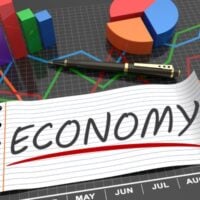In the realm of energy proposals, impact data serves as the backbone of persuasive arguments and strategic planning. It provides a quantifiable basis for decision-making, allowing NGOs to demonstrate the tangible benefits of their initiatives. By presenting clear and compelling data, organizations can effectively communicate the potential outcomes of their projects, thereby increasing the likelihood of securing funding and support.
Impact data not only enhances credibility but also fosters trust among stakeholders, including donors, community members, and government agencies. In an era where transparency and accountability are paramount, the ability to substantiate claims with solid evidence is invaluable. Moreover, impact data plays a crucial role in aligning energy proposals with broader sustainability goals.
As global attention shifts towards climate change and renewable energy solutions, NGOs must articulate how their projects contribute to these pressing issues. By leveraging impact data, organizations can illustrate their alignment with international frameworks such as the United Nations Sustainable Development Goals (SDGs). This alignment not only strengthens proposals but also positions NGOs as key players in the global energy transition, enhancing their reputation and influence in the sector. Are You Working on Solar Innovation or Clean Energy Access? Join us to receive updates.
Identifying Key Metrics for Measuring Energy Impact
To effectively measure energy impact, NGOs must first identify key metrics that align with their project goals. These metrics can vary widely depending on the specific objectives of the proposal, but common indicators include energy savings, greenhouse gas emissions reductions, and community engagement levels. For instance, if an NGO is proposing a solar energy project, it may focus on metrics such as kilowatt-hours generated, the number of households served, and the reduction in reliance on fossil fuels.
By selecting relevant metrics, organizations can create a clear framework for evaluating their project’s success. In addition to quantitative metrics, qualitative indicators should also be considered. These may include community satisfaction surveys or testimonials from beneficiaries that highlight the social impact of energy initiatives.
By combining both quantitative and qualitative data, NGOs can present a holistic view of their project’s impact. This comprehensive approach not only enriches the narrative but also resonates more deeply with stakeholders who may prioritize different aspects of project outcomes.
Collecting and Analyzing Relevant Data for Energy Proposals
The collection and analysis of relevant data are critical steps in crafting effective energy proposals. NGOs should begin by conducting thorough research to gather baseline data that reflects the current energy landscape in the target area. This may involve collecting information on existing energy sources, consumption patterns, and demographic data.
Engaging with local communities through surveys or focus groups can provide valuable insights into their energy needs and preferences. Such grassroots engagement not only enriches the data pool but also fosters a sense of ownership among community members. Once data is collected, NGOs must employ robust analytical methods to interpret the findings accurately.
This may involve statistical analysis to identify trends or modeling techniques to project future impacts based on proposed interventions. Utilizing software tools for data analysis can streamline this process and enhance accuracy. Furthermore, collaborating with academic institutions or data experts can provide additional credibility to the analysis.
By presenting well-analyzed data in proposals, NGOs can substantiate their claims and demonstrate a thorough understanding of the energy challenges they aim to address.
Incorporating Impact Data into Energy Proposal Narratives
Integrating impact data into the narrative of an energy proposal is essential for creating a compelling case for support. The narrative should weave together quantitative findings with qualitative stories that illustrate the human element behind the data. For example, while presenting statistics on energy savings, NGOs can include personal stories from beneficiaries who have experienced improved living conditions due to access to renewable energy sources.
This combination of hard data and personal anecdotes creates a powerful narrative that resonates with funders and stakeholders alike. Additionally, it is important to contextualize impact data within the broader energy landscape. NGOs should explain how their proposed project fits into existing initiatives or policies and how it addresses specific gaps or challenges in the community.
By framing impact data within a larger context, organizations can highlight the significance of their work and its potential to drive systemic change. This strategic storytelling approach not only captivates readers but also reinforces the urgency and relevance of the proposed project.
Using Visual Aids to Enhance Impact Data in Energy Proposals
Visual aids are an effective tool for enhancing the presentation of impact data in energy proposals. Graphs, charts, infographics, and maps can transform complex data into easily digestible visuals that capture attention and facilitate understanding. For instance, a bar graph illustrating projected energy savings over time can quickly convey the long-term benefits of a proposed solar installation.
Similarly, infographics that summarize key metrics can provide a snapshot of the project’s potential impact at a glance. When creating visual aids, it is crucial to ensure that they are clear, concise, and relevant to the narrative. Overly complex visuals can confuse rather than clarify, so simplicity should be prioritized.
Additionally, using consistent branding elements such as colors and fonts can enhance professionalism and coherence throughout the proposal. By thoughtfully incorporating visual aids, NGOs can elevate their proposals and make a lasting impression on potential funders.
Demonstrating the Cost-Benefit Analysis of Energy Proposals
A comprehensive cost-benefit analysis (CBA) is essential for demonstrating the financial viability of energy proposals. This analysis should outline both the costs associated with project implementation—such as equipment purchases, installation expenses, and maintenance—and the anticipated benefits over time. Benefits may include direct financial savings from reduced energy bills, increased property values due to improved energy efficiency, and potential revenue from selling excess energy back to the grid.
In addition to financial metrics, NGOs should consider including social and environmental benefits in their CBFor example, quantifying the reduction in carbon emissions or improvements in public health due to cleaner air can provide a more holistic view of the project’s value. By presenting a well-rounded CBA that encompasses both economic and non-economic factors, NGOs can make a compelling case for investment in their energy initiatives.
Highlighting the Environmental and Social Impact of Energy Proposals
The environmental and social impacts of energy proposals are increasingly important considerations for funders and stakeholders. NGOs should clearly articulate how their projects contribute to environmental sustainability by reducing carbon footprints, conserving natural resources, or promoting biodiversity. For instance, a proposal for a wind farm could emphasize its role in decreasing reliance on fossil fuels while preserving local ecosystems.
Social impacts are equally significant; NGOs should highlight how their projects empower communities by providing access to clean energy, creating jobs, or enhancing quality of life. Testimonials from community members or case studies showcasing successful implementations can effectively illustrate these impacts. By emphasizing both environmental and social dimensions, NGOs can appeal to a broader audience and align their proposals with global sustainability goals.
Leveraging Case Studies and Success Stories in Energy Proposals
Incorporating case studies and success stories into energy proposals can significantly enhance their persuasiveness. Real-world examples of similar projects that have achieved measurable success provide concrete evidence of feasibility and effectiveness. For instance, an NGO proposing a biomass energy project could reference successful implementations in other regions that resulted in job creation and reduced waste.
These case studies should be presented in a way that highlights relevant similarities between past projects and the proposed initiative. This could include factors such as geographic context, community engagement strategies, or technology used. By drawing parallels between successful examples and their own proposals, NGOs can instill confidence in potential funders regarding their capacity to deliver similar results.
Addressing Potential Challenges and Risks in Energy Proposals
While it is essential to present a positive outlook in energy proposals, acknowledging potential challenges and risks demonstrates transparency and preparedness. NGOs should conduct a thorough risk assessment that identifies possible obstacles—such as regulatory hurdles, funding shortfalls, or community resistance—and outline strategies for mitigating these risks. For example, if there is a concern about regulatory compliance for a new technology, NGOs could detail plans for engaging with local authorities early in the process.
By proactively addressing challenges, NGOs not only build credibility but also reassure stakeholders that they have considered various scenarios and are equipped to navigate uncertainties. This level of foresight can enhance trust among funders who appreciate organizations that approach projects with diligence and strategic planning.
Engaging Stakeholders with Impact Data in Energy Proposals
Engaging stakeholders throughout the proposal development process is crucial for ensuring buy-in and support for energy initiatives. NGOs should actively involve community members, local leaders, and other stakeholders in discussions about project goals and expected impacts. This engagement can take various forms—community meetings, workshops, or surveys—and serves to gather input while fostering a sense of ownership among those affected by the project.
Furthermore, sharing impact data with stakeholders during these engagements allows for collaborative discussions about priorities and concerns. By presenting data transparently and inviting feedback, NGOs can build stronger relationships with stakeholders while refining their proposals based on community insights. This collaborative approach not only enhances proposal quality but also increases the likelihood of successful implementation.
Creating a Compelling Call to Action in Energy Proposals
A compelling call to action (CTA) is essential for motivating stakeholders to support energy proposals actively. The CTA should clearly articulate what is needed from funders or partners—whether it be financial support, resources, or collaboration—and emphasize the urgency of taking action now. For instance, an NGO might highlight how immediate funding could lead to significant energy savings within a specific timeframe or how timely support could help address pressing environmental issues.
Additionally, framing the CTA within the context of broader societal benefits can amplify its impact. By connecting individual contributions to larger goals—such as combating climate change or improving community resilience—NGOs can inspire stakeholders to see their involvement as part of a collective effort toward meaningful change. A well-crafted CTA not only concludes proposals effectively but also leaves readers feeling empowered to take action.
In conclusion, integrating impact data into energy proposals is essential for demonstrating credibility and securing support from stakeholders. By identifying key metrics, collecting relevant data, incorporating narratives and visuals effectively, conducting thorough analyses, addressing challenges transparently, engaging stakeholders meaningfully, and crafting compelling calls to action, NGOs can create persuasive proposals that resonate with funders while driving positive change in communities around the world.
When developing winning energy proposals, it’s crucial to incorporate impact data that demonstrates the potential benefits and effectiveness of your project. A related article that can provide insights into crafting compelling proposals is the ILO-MADAR Call for Proposals for Better Employment Opportunities for Vulnerable Youth. This article discusses the importance of addressing employment challenges and creating opportunities for vulnerable groups, which can be a valuable perspective when considering the social impact of energy projects. Understanding how to align your energy proposal with broader social goals can enhance its appeal and effectiveness. For more information, you can read the full article here.









































